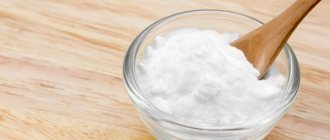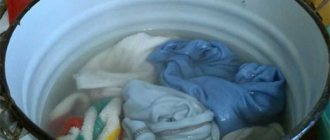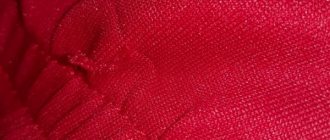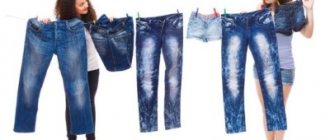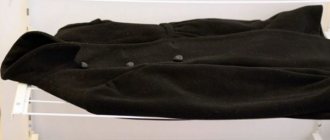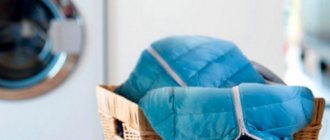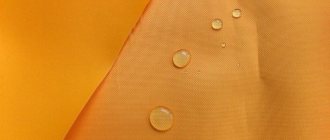Vegetable oil can be used as a cleaning agent, for washing and bleaching kitchen towels and linen, especially children's. Both white and colored items can be washed with vegetable oil, with the exception of items that shed heavily. When using oil and bleach simultaneously, the aggressiveness of the latter is reduced.
It is also used to remove old and sticky stains from kitchen work surfaces, dishes, and to restore the appearance of polished furniture and natural leather.
The product is suitable for the following purposes:
Cleaning from contaminants:
- chewing gum;
- candle paraffin.
Removing paint:
- oil;
- gouaches;
- watercolors;
- acrylic.
Care:
- for genuine leather.
Whitening:
- kitchen towels;
- children's things;
- linen
Odor removal:
- food origin.
Cleaning:
- slabs;
- dishes;
- furniture.
Washing and bleaching kitchen towels
There are several ways to remove stubborn stains from kitchen towels and bleach them using vegetable oil. But what they have in common:
- vegetable oil is added to the solutions at the end, otherwise it will be very difficult to mix the remaining ingredients;
- load dry things into the solution unless otherwise indicated.
Method 1
- Ingredients: vegetable oil (4 tbsp), washing powder (300 g), dry bleach (4 tbsp), water (10 l).
- Step-by-step instructions: dissolve the ingredients in water, soak towels, linen or other items for two to three hours. Machine wash, add extra time when rinsing to ensure that traces of oil are removed.
Method 2
- Ingredients: vinegar essence (2 tablespoons or a glass of vinegar), vegetable oil (2 tablespoons), soda (2 tablespoons), washing powder (80 g), water (10 l).
- Step-by-step instructions: dissolve everything in water, soak things overnight. Wash in the machine in the morning, use an intensive rinse or an increased number of cycles. Suitable for white items.
Method 3
- Ingredients: vegetable oil (2 tbsp), dry bleach (2 tbsp), washing powder (300 g), hot water (10 l).
- Step-by-step instructions: do the opposite - first wash the clothes, then put them in the solution and leave them there until they cool. Rinse thoroughly, possibly in a machine with an additional rinse cycle.
Have you tried vegetable oil to whiten things?
Not really
Method 4
- Ingredients: vegetable oil (90 ml), bleach (100 g), laundry soap (half a bar), water (10 l).
- Step-by-step instructions: grate the soap, boil water, add soap and dissolve it completely, add bleach and finally oil. Place the laundry and boil for 15 minutes (further depending on the degree of contamination). Turn off the heat and leave until completely cool (ideally overnight). Wash as usual and rinse.
Method 5
- Ingredients: vegetable oil (1 tbsp), laundry soap (quarter of a bar), potassium permanganate (to obtain a light pink solution), water at room temperature (10 l).
- Step-by-step instructions: dilute potassium permanganate, add soap, dissolve completely, pour in oil and stir. Place the laundry and leave for 10 hours. Machine wash.
Method 6
- Ingredients: vegetable oil (40–50 ml), table vinegar (40 ml), mustard powder (1 tbsp), water heated to 60 °C (10 l).
- Step-by-step instructions: dissolve mustard in water, add vinegar and oil. Mix everything thoroughly. Place the laundry and leave for 12 hours. Rinse twice - first in warm water, then in cold water.
Useful tips
To whiten towels as effectively as possible, we recommend:
- Add the oil component only after the other ingredients are completely dissolved in water. If this rule is not followed, the oily film will slow down the dissolution process and reduce the effectiveness of other components.
- If you use a recipe with vinegar, it is not recommended to replace the bleach with soda: the resulting mixture will foam heavily and overflow the edge of the container.
- Place only dry items for processing - moisture will prevent the dirt from breaking down, and the cleaning will be of poor quality.
French - against unpleasant odor
The French washing method can really return kitchen towels to their original dazzling snow-white appearance, and they will smell fresh. And the main thing is that to get perfect linen, you don’t even need to boil it.
Changing and washing towels should be regular. The best option would be to change every 3 days.
For the procedure you will need:
- 2 pans with a capacity of 6-7 liters;
- 1/4 piece of laundry soap in the form of shavings;
- 5-7 crystals of potassium permanganate.
To begin, pour water into both pans and bring to a boil. 5-7 crystals of potassium permanganate dissolve in one of them, and care should be taken that the water has a pinkish tint, but not dark. In another saucepan, stirring constantly, dilute soap shavings. Then the contents of both pans are poured into a large basin and the towels are loaded there for 6-7 hours. You can cover the basin to keep the water hot for as long as possible. After the time has passed, the laundry is washed and rinsed in the usual way.
Buy potassium permanganate from gardening stores and add it to your laundry.
This method is ideal for whitening and freshening items, but is not suitable for fabrics that cannot be washed at high temperatures. It is also well suited for baby diapers: it copes well with stains and avoids allergic reactions on delicate and sensitive baby skin.
What do you need to know before washing?
To prevent washing from taking a lot of time and effort, it is recommended not to use terry towels in the kitchen. Due to prolonged drying, they quickly begin to smell unpleasant.
It is preferable to choose cotton, bamboo or linen cloths and napkins . It is better if they are waffle, because they absorb moisture well and dry quickly.
Kitchen towels will not get dirty as intensely if they are ironed with a hot iron after washing and drying.
Washing towels with vegetable oil is suitable for any cotton fabrics. And after 2-3 soakings, even faded fabrics regain their former brightness. But it makes no sense to wash synthetics in a homemade vegetable mixture - the desired result will not be achieved.
Pre-soaking will help remove stubborn stains on kitchen towels more effectively.
The laundry is immersed in any of the proposed solutions for 5-6 hours:
- add 5 tbsp to warm water (5-6 liters). l. washing powder and baking soda;
- The same number of tablespoons of salt are dissolved in the same amount of water.
For white laundry, soaking with Domestos bleach is suitable. Subsequent washing with vegetable oil produces an appropriate chemical reaction that helps break down the protein base of difficult-to-remove stains. In addition, the oil also whitens clothes.
To remove contaminants from textiles, you must choose exclusively filtered oil (preferably sunflower) - this is a refined or deodorized product.
Silicate glue
To remove the most stubborn stains on kitchen towels made of natural fabric, you can use regular silicate or office glue. To do this, dissolve soap shavings from 1 piece of laundry soap in 10 liters, add 1 tbsp. spoon of silicate glue. It is necessary to boil the towels for 30-60 minutes. Then they are loaded into the rinsing machine and you get perfectly clean and fresh laundry.
Silicate glue is suitable for washing very soiled items.
Using vegetable oil with washing powder
This technique came to Russia from the Land of the Rising Sun. The traditional Japanese combination of sunflower oil and laundry detergent produced amazing results. The mixture effectively removed stains and combated yellowness. It should be noted right away that this recipe is only suitable for hand washing. It is strictly forbidden to use a combination of oil and powder to clean home textiles in an automatic machine. The mixture can cause irreparable harm to equipment. The whitening recipe is very similar to the previously discussed methods; it involves following a certain algorithm. Exactly:
- you should take 8-10 liters of very hot water;
- add 50-70 grams of hand washing powder to the liquid;
- pour in a few tablespoons of vegetable oil.
Severe stains are pre-washed with laundry soap. Dry kitchen towels are soaked in the resulting soap solution. The latter is thoroughly kneaded with a silicone spatula. Things are left overnight, then rinsed. It is best to alternate hot water with cold. Rinsed towels can be washed by hand or placed in a washing machine. To carry out the procedure, use a standard amount of powder. It is allowed to add conditioner to scent home textiles. For automatic cleaning, set the following parameters:
- Washing mode “Cotton”, “Synthetics”, “Sport”, “Intensive wash”.
- You can select Extra Rinse.
- Set the temperature in the range from 40 to 60 degrees.
A little about the effectiveness of the method
It would seem that vegetable oil can only contaminate kitchen towels, add new stains to them, and not bleach them. But, probably, many have heard the old truth: “Like conquers like,” and it becomes possible to fight fats on tissue even with the help of other fats.
Some housewives, doubting the effectiveness of the oil-powder mixture, avoided adding vegetable oils to the solution and tried to bleach without the fatty component. But then the result was unsatisfactory: old stains remained on the fabric. The vegetable oil additive softens old dirt and helps remove it.
Mixtures for colored products
Products with a pattern can also be boiled, but the boiling time for things with color should not exceed one hour. In addition, compositions containing chlorine or peroxide should not be used for colored fabrics. If you use store-bought products, then purchase Persol. This oxygen bleach does not contain chlorine.
The following detergents are suitable for colored clothes (proportions per 10 liters of water).
- Laundry soap and soda. Dissolve 250 g of soap shavings and baking soda in a saucepan and stir. Baking soda is gentle on hard water, and soda ash bleaches fabrics. Place things in the solution and start boiling. Process things for an hour and a half. Then rinse them in clean water and dry. This method is also suitable for boiling light-colored jeans.
- Soda and salt. The mixture is only suitable for clean items. Boiling time is about 30 minutes.
It is not necessary to rinse your laundry by hand every time. The washing machine will come to the rescue. Load the items into the drum and activate the “Rinse” function.
Features and benefits of digestion
Technological progress is developing rapidly, supermarket shelves are bursting with all kinds of powders and conditioners. But bleaching agents do not always cope with their task: after each wash, particles of dirt and dust still remain on the fabric. And in a standard automatic machine, the maximum washing temperature does not exceed 95°C. All that remains is to resort to a long-known method: decide to boil the laundry so that the gray becomes white.
This process is not complicated, but it is lengthy. You need to understand how to properly boil laundry for bleaching and know the obvious advantages of this procedure. Boiling has five undoubted advantages.
- Disinfection. For infectious diseases (scabies, lice), doctors strongly recommend steaming the patient’s bed linen to avoid re-infection.
- Bleaching. Boiling returns the original whiteness to things and removes gray plaque.
- Removing old stains. After boiling the clothes, stubborn stains disappear without a trace.
- Natural composition. In case of intolerance to chemical elements and skin sensitivity, boiling and washing without harm to health.
- Processing of children's clothing. High temperature helps remove grease stains, traces of paints and felt-tip pens from textiles. Thorough disinfection is also necessary for baby's undershirts and diapers in order to protect the fragile child's body from infections.
The boiling time depends on the degree of soiling of the clothes. On average, you can boil things from half an hour to two hours. After completing the procedure, leave the container on the stove until the solution has cooled.
Benefits of Oil Washing
The main advantages of washing textiles with the addition of vegetable oil:
- Fatty acids dissolve greasy stains and soften old dirt. At the same time, the material does not suffer from exposure to oil: the fabric fibers become more elastic and less fragile.
- You won't need to boil things like you used to, so using oil saves time and minimizes the damaging effects of detergents and bleaches on fabrics.
- Home textiles become softer, colored products take on a bright and fresh look. After this wash they are easier to iron.
- allergy-prone skin
Reference. In addition to all the beneficial properties, using oil when washing significantly saves the family budget!
To ensure that your washing results are pleasing with the cleanliness of items that were once discolored by various stains, pay attention to the following factors:
- Oil is added to the already prepared mixture of the remaining components, otherwise the liquid will turn out to be heterogeneous, and therefore useless in the fight against stains.
- Items that require washing are placed dry in a pre-prepared liquid, since pre-wetting prevents the dissolution of contaminants.
Important! To get rid of stains efficiently, follow the recipe and soak time for towels in a fat solution. This will help not only destroy contamination, but also preserve the original appearance of the products for a long time.
Using a microwave
This method is very effective, but you should take into account the fact that the smell of powder or bleach may remain in the microwave oven for a long time, and you may even have to wash and ventilate it. Otherwise, you may end up with heated food that smells like household chemicals. The best option is to use an old microwave.
You can wash kitchen towels in the microwave in just a couple of minutes without much effort.
When carrying out this procedure, you cannot be distracted; everything must be under control and timed. It is prohibited to increase the power and duration, since the plastic bag is a flammable item.
How to bleach correctly:
- For one bookmark, take no more than three towels. They should be wetted and anti-stain applied or well soaped with laundry soap. When removing greasy stains, you can use dishwashing detergent. The foam on towels, especially in stained areas, should be plentiful.
- Then the towels are placed in a tight plastic bag that is not tied.
- Set the power to 400-500 W and turn on the microwave for 90 seconds.
- After receiving the readiness signal, you should carefully check the temperature of the towels so as not to get burned. They must be hot, otherwise the procedure must be repeated.
- To avoid burns, hot towels are removed from the oven with kitchen tongs and placed in the drum of a washing machine for rinsing, or rinsed by hand.
- Subject to safety precautions, this method will allow you to wash towels simply, quickly and easily. This unusual washing will help give the fabric its pristine whiteness and cope even with old stains, and most importantly, save time.
The best way to bleach fresh stains is to use a microwave.
This method can be used many times, it is effective not only for towels, but also for T-shirts and shirts.
We suggest you familiarize yourself with Washing white clothes with soda
How to properly wash items with oil
Proper use of sunflower extract allows you to get rid of even old contaminants. In addition, this effective method allows you to return the product to its former whiteness. It is important that the use of vegetable oil is suitable for any type of home textiles: waffle towels, linen, terry. To achieve the best result, it is recommended to follow the following algorithm:
- pre-sort products;
- soak kitchen towels;
- remove stains;
- wash in the usual way;
- dry and iron home textiles.
An important step in washing is sorting the items. The color and texture of textiles are taken into account. Bright towels are washed separately from white ones, synthetic ones - separately from products made from natural materials. To remove dirt from the fibers faster, you should first soak the item in warm water. You can speed up the process of softening stains by using dishwashing detergents, liquid or laundry soap.
Next, vegetable oil is used to completely clean the product and return it to its bright white color. After carrying out all the necessary manipulations, the product is washed in an automatic machine or by hand. In special cases, very dirty household textiles can be boiled with bleach. You can dry the towel both outdoors and indoors. After this, the item must be ironed.
It is important to know that vegetable oil is not used separately; it is not capable of removing contaminants. However, in combination with some other components, it perfectly softens stains and helps wash them out of the fibers.
General recommendations
Whitening kitchen towels will be faster and much more effective if you initially apply some recommendations. To reduce the negative impact of bleaches from the store and boiling, you should listen to the following advice:
- In the household you need to have several sets of kitchen towels; if they are very dirty, you can immediately get the next one.
- Do not rush to wash until the products you use are visually dirty. With minimal contamination, the towel can be used for three days in a row, or even for a whole week.
- Be sure to iron the washed and dried towel; its appearance will be more neat and cleanliness will remain for a longer period.
- To remove greasy marks and other contaminants on kitchen surfaces, use disposable rags and napkins. If necessary, they can be thrown away immediately after use.
- It is better to blot and dry vegetables and fruits with paper towels; they are also better for removing greasy marks.
- Remove moisture from washed hands with a cloth towel.
Advice! You should not use terry types of towels for the kitchen; they take longer to dry, which contributes to the development of harmful microflora and an unpleasant smell in the kitchen. Such products will be washed in the same way as regular linen ones.
The best option for kitchen towels would be waffle cotton ones. The fibers have excellent absorbent characteristics; this type of laundry is bleached using chlorine-containing substances and traditional methods.
To prevent strong marks, it is necessary to wash kitchen towels more often using various auxiliary products, including sunflower oil.
Simplest
You don't even need bleach here:
- Pour 5 liters of clean water into an enamel pan and put on fire.
- When the water boils, pour ½ cup of washing powder and 1 tbsp into the pan. refined sunflower oil.
- Mix the solution and dip the laundry into it. Leave for several hours or overnight.
- The next day, rinse the towels in hot and then warm water.
This effective method with vegetable sunflower oil will help whiten kitchen napkins and towels very quickly.
